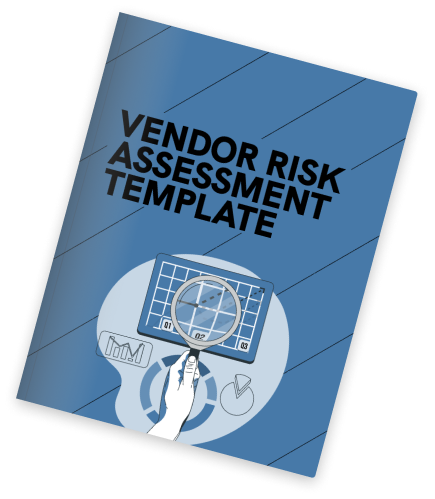
In today's competitive business landscape, most companies have to rely on collaborations with many third-party partners, vendors, and suppliers to keep operations running smoothly and strengthen their bottom line. But these third parties also create numerous risks that can harm the organization's operations, financial standing, and reputation.
That's why it's crucial to have a proper vendor management program in place and rely on risk management best practices to minimize these risks. It's also essential to take into account any third-party risk management regulations and standards and ensure that your third parties comply with them. In this article, we'll explore some of these regulations and their benefits.
A good understanding of third-party risk management regulations is essential for protecting companies from different types of vendor risk. It can help decision-makers make fully informed choices for the company's welfare and appropriately assess, measure, monitor, and control the risks associated with any third-party relationship. The fundamental step in the third-party risk management process is a risk assessment that helps develop a thorough understanding of whether or not to enter into a third-party relationship.
Download our free vendor risk assessment template to give you an idea of critical questions you should consider asking your vendors to ensure you understand the potential risks associated with the third party under consideration.

Different risk management regulations help organizations manage and mitigate third-party risks. It is essential to study these rules and regulations to avoid problems down the road.
Several rules and regulations focus on cybersecurity and data protection, giving businesses the assurance that they have the full protection of the law. It's essential to ensure that third-party vendors maintain their customers' data privacy at all costs. There must be a robust information disclosure and security protocol in place.
In Europe, there is a comprehensive consumer protection law to protect the personal information of EU citizens and residents—General Data Protection Regulation (GDPR). It standardizes data protection law across all 28 EU countries and imposes strict rules on controlling and processing personally identifiable information (PII). The law applies to any organization within or outside the EU that processes the personal data of EU citizens or residents. The GDPR requires organizations to perform regular risk assessments to improve cybersecurity and prevent attacks or breaches that could cause havoc if left unchecked. In the US, there is no centralized federal level law, but there are vertically-focused US data privacy laws, including the following:
There are also specific laws at the state level that attend to data protection and cybersecurity. One of the most prominent is the California Consumer Privacy Act (CCPA) of 2018. This law is similar to the European Union's GDPR. The CCPA seeks to protect the rights of people regarding their personal data and imposes obligations on companies that do business in California to help support those rights. This includes third parties who work with data.
We also would like to mention ISO/IEC 27001:2013 that it is a specification for an information security management system (ISMS). It applies to controls related to information security in third-party relationships and supplier service delivery management.
The Federal Reserve issued this guidance in 2013 to help financial institutions, financial services providers, and banking organizations develop a secure third-party risk management program. The guidance applies to all service provider relationships regardless of the type of outsourced bank activity.
Similar to FED SR 13-19, the FIL-44-2008 published by the Federal Deposit Insurance Corporation (FDIC) also addresses the risks that may arise from financial institutions' third-party relationships. It outlines some key risks that can arise from third-party relationships, the principles of risk oversight, risk management, vendor contract negotiation and structures, and vendor oversight.
This law is designed to protect investors and the public by increasing the accuracy and reliability of corporate disclosures. It applies to all public companies operating in the US. SOX defines internal audit requirements, the records businesses should store, and how long. It includes several controls for managing third-party risk.
In addition to the regulations explained above, there are many other regulations and laws related to third-party risk management. Companies should refer to relevant third-party risk management regulations when accomplishing all steps of vendor risk management. Third-party risk management is a complicated and arduous process. And although each third-party-risk management program is different, there are some areas in the third-party risk management lifecycle where automation makes sense.
With START, you can streamline the processes to save valuable time, money, and resources and increase your team's productivity.
Forget about juggling thousands of emails and spreadsheets. Have all the data in one system with handy reporting and remediation functionality.
Third-party risk management regulations, laws, and standards provide frameworks, policies, and resources to help companies manage third-party risk and develop contingency plans. They also guide the controls and procedures that organizations must implement to ensure vendor risk mitigation and, if possible, elimination of third-party risk.
By complying with regulators and laws, businesses can prove their willingness to go the extra mile to earn trust and establish a reputation for ethical business practices and reliability.
Compliance with applicable regulations and standards can also help reduce the negative impact of any interruptions to third-party operations, maintain business continuity, and protect your company from data breaches, security incidents, and any resultant fines or other penalties.